-
Posts
4,741 -
Joined
-
Last visited
-
Days Won
119
Content Type
Profiles
Forums
Resource Library
Events
Gallery
Blogs
Store
Community Map
Posts posted by Mayner
-
-
1 hour ago, jhb171achill said:
Just for info purposes, in case anyone's still awake - I'll outline a few of the "might-have-beens"; tis a slow, cold, rainy Saturday night, and I have not yet decided whether I'm prepared to go down the road tonight for a pint. So; as far as I remember, and having been involved in feasibility studies (promoted by other people, not me!)....
1. Tullow.
Two wealthy businessmen (so they said) approached the RPSI in the early 1990s. Their question: "Have you any old trains for sale?". (Yes, I know, I know, but better is to come, dear reader, and they never even mentioned the brits building anything to control us, or lines closed in the 1950s being sold for scrap to make bombs to drop on Germany.....!) Their rationale: they and their families had been on holiday in Britain and had taken a trip on one of the busier steam railways there, and on a bank holiday. I think it was the Severn Valley, but it doesn't matter. They noted six and seven coach trains jammed to the doors with people, and worked out that the fares paid per mile were very much higher than CIE charged. "Must make an absolute fortune!" they concluded. I exchanged several phone calls and correspondence with them, and we worked out that IF they had the bottomless pockets they claimed to have, and IF they owned the four miles of the trackbed of the line that they said they did, the RPSI could lease the two J15s to them. In theory. As always in railway preservation, theory and practice are not just on different planets - they are in different galaxies. When the realities of the care and maintenance of steam locos was made clear to them, along with the regulatory necesseties of boiler care and insurance, track maintenance and the like, they ran away scared. We had not yet discussed marketing, public access, sight lines for access roads, suitable access for low loaders bringing rolling stock, and financial sustainability, let alone commented on the fact that half a million tourists just will NOT ever descend on Tullow per year solely to travel four miles behind a J15 with two coaches. However, in an imaginary world, we now have a four mile line from the (then still existing) fully restored Tullow station, complete with original overall roof! Hell, why not throw in a new-build GSWR 4.4.0..... It would, of course, look great!
2. Belcoo.
This was born of cross-border "Peace Money", along with IFI & ERDF funding. Had it come to pass, and it very nearly did - it would have consisted on a mile and a half of the SLNCR (stop that drooling, Galteemore, that's yer last wanring). This would have run from Belcoo station, across the road and down through fields to the MacNean bridge, which was (and is) in two bits in the water following being blown up by the British Army during the troubles in case those with issues about their presence in the area (which, to be fair, was the majority locally!) might use it to escape their attentions when moving things that might go "bang" about during nocturnal hours. And the funding was THERE! Yes, a first time for everything.
Unfortunately, this dropped dead in the water due to a discrepancy of opinion amongst two leading local landowners, each of whom took the view that if the other one was in favour, well I'm aginst it. Had it come to pass, it was to be done on a low-cost, low key basis. With approval from IE, the Sligo railcar was to go to Brexitland to be refurbed and fitted with an almost new Gardner engine similar to the Donegal railcars. This was long before there was any talk of that vehicle going to Downpatrick; it was then languishing in Mallow, to which certain scrap merchants had, eh, travelled in order to relieve it of anything valuable, but thus enabling rain to get in and rust parts of it from the inside out. (At least it has survived). Permission WAS obtained for that, and Fermanagh Council agreed to part-fund it. Next, the RPSI would be approached with a view to having "Lough Erne" as a static exhibit there, and the NCC Railcar No. 1 also given a refurb and an identical Gardner engine. Ulsterbus was prepared to provide sheet metal and upholstery. The line would operate from Belcoo down to the lake shore - an excellent scheme. The terminus, like inch Abbey, would be a platform with short run round. No frills, but perfect for a location like that. No nonsensical, emotion-driven notions of new-builds hauling Enterprise-sized trains, to which every tourist on the island would surely want to do rather than go to the Giant's Causeway, Trinity College or the Cliffs of Moher. A "G" class, the Whitehead MGWR six-wheeler, again restored, and a brake van - all of which were available - would complete the entire stock. No endless sidings full of unsightly scrap - there was no room for anything like that anyway. An old carriage chassis - laminate, I think it was, with a flat floor on it, would serve as a loco-pushed "work wagon", similar to that at Downpatrick back in the day. By the time there was some sort of light of day where the two local landowners MIGHT agree, the funding pots were dried up, never to be repeated again on such generous terms.
Personally, the above would have been my favourite.
3. Athboy.
Another one I liked, and invested much research in. A study group was established; a founder member of IRM was one of the gang; in which the issue of a DCDR-style heritage railway within maybe an hour's drive of Dublin was contemplated. The purpose of the group was to extensively research what was possible, what suitable funding sources might be there, and what engineering and other issues might have to be addressed.
In an initial meeting, and following some groundwork by several members, some eighteen possible sites were identified. Any with level crossings or access issues, either for the general public or bringing rolling stock in, were obviously eliminated straight away once those issues became known. From memory, there were two separate sites on the old Tullow branch looked at, a complete green-field site in Co. Wexford, where a new line could run along the river bank for two miles near Bunclody; a stretch near Carlingford, and a possible bit of the Kingscourt line were all looked at. Within one and a half meetings, we were left with two possibilities. For one reason or another all of the others were eliminated completely (as opposed to being considered less desirable). The two were Ballinglen - near Tinahely on the Shillelagh branch, now a rough greenway type of footpath; and Trim to Athboy.
Both Trim and Athboy stations were long gone, but road access was fine, both are tourist towns, near a motorway, etc etc. So what would it have looked like?
One end would have been fairly rudimentary, a la Inch Abbey. The other, probably the Athboy end, would be a new-build small station with the appearance of a small Dublin & Meath station. Rolling stock would be - with the initial agreement of the ITG - three "G" class; one on loan from Downpatrick, and two from Carrick-on-Suir. All three would be sent to Germany, where these things were still being built NEW at the time, or had been in the very recent past, and refurbed over there into as-delivered condition. Several laminates would be obtained, possibly heated in the same way the Loughrea coach was. Again, the Whitehead six-wheeler, a basic couple of ballast hoppers, work bogie and guard's van, and nothing else. Space would be available in a museum for displaying an RPSI or Cultra steam loco which was not in use.
What went wrong with THAT one was that one landowner owned well over half of the route, which was straight and entirely clear, just through fields. That landowner was having none of it.
The study group presented its findings to the local authorities / councillors at each end of the line. On a scale of 1-100, the interest level shown was 0.
So there's a few might have beens to discuss over pints tonight, wherever you'll be!
For pure nostalgia Athboy-Trim would have been the apple of my eye, childhood memories of a land of disused railways, castles and later fishing trips with my father.
Athboy Station survived intact with all its railway buildings until re-developed for housing in the late 90s-early 2000s, Trim was long gone and too far from the Town Centre and Castle. A station/platform nearer the Castle might have helped boost passenger numbers, or possibly a short train ride for Tour Bus passengers, I doubt that Trim & St John's Castle visitor numbers are anything like attractions like the Giants Causeway or Carnarfon Castle.
Coach Tour operators switch to rail.
Going cross-threaded. Tour and Coach (bus) operators in the UK and elsewhere do include end-to end trips on Tourist Railways in their tour itinerary and coach operators co-operate with Tourist Railways to provide coach transfers between destinations. Much of the Festiniog Railways bread and butter income came from carrying coach tour passengers between Portmadoc and Tanyrisaiu 12 miles up the line. On a more extreme scale on the Cumbres and Toltec in the States passengers travelling the full 64 mile 6½hour journey over the line have for the past 40 years traveled in one direction by train, the other direction by coach/bus. The Durango and Silverton offer a similar option for passengers who don't want to spend the whole day on the train.
Nearer to home much of the Clonmacnoise and West Offaly (BNM Boora late 80s-mid 90s) came from the Coach Tour business.
The Valencia line closure came at a time before Local and Central Governments viewed uneconomic scenic railway lines as a potential source of Tourist Income and tax/rate income. It was not until the 70s that the potential was realised in the UK and Councils began buying and leasing scenic lines like the North Yorkshire Moors and West Somerset to preservation societies, New Mexico-Colorado realised the potential in the late 60s buying a remote/scenic 64 mile narrow gauge section of the DRGW for operation as a Tourist Railway, Dunedin (NZ) did not realise the potential until the late 80s buying the 37 mile Taieri Gorge section of the Otago Central Railway for operation as a Tourist Attraction.
The one major difference between the Valencia the Taieri Gorge, Cumbres and Toltec and Durango and Silverton is that the scenic sections of all lines are largely inaccessible by road and more spectacular in nature tha the Drung Hill section of the Valencia line. While the Cumbres and Toltec is in a remote area, Durango has been a thriving tourist centre for many years, the Traieri Gorge's income comes mainly from ferrying Cruise Ship passengers directly from their ship to a wild and remote gorge.
In simple terms Kells-Mountain Stage section of the Valencia line would have been an interesting train ride, with the same but slightly higher views of Dingle Bay thus hardly likely to attract casual or Coach Tour passengers.
The Tralee and Blennerville tends to fall down in a similar manner, why take a train from Ballyard to the Windmill when you can park by the Windmill, on the other hand the Waterford and Suir Valley ticks the box in terms of a short train ride through a riverside location that not accessible by car or Tour Bus! The cycleway is not an issue have become an adjunct to Tourist/Heritage railways since the 80s. Potential option of fitting hooks for cycles to the trains similar to the Dublin and Blessington, allowing cyclists to return home in the comfort of the train tram. Common complaint about the D&B was the Tram breaking down shortly after leaving Blessington and cyclists having to dismount and cycle home and tackle the climb to the summit at Crooksling in the dark
Museums
Going back to a museum in the South going back to past experiences its unlikely to be commercially viable and considerable political lobbying would be required at national level to include a railway museum in the National Museum's remit.
Volunteer groups (RPSI, ITG, National Transport Museum, IRRS) and individuals working on their own initiative have had the most success.
In Cork or Munster contacting the Cork Area of the IRRS and railway enthusiasts who live in the province to gauge the level of interest would be a first step.
-
 2
2
-
-
The Waterford and Suir Valley is an interesting one, a Community Enterprise that has operated a commercially successful Tourist Railway beneath the radar of the enthusiast community for over 20 years.
The railway appears to have been promoted as a tourist attraction by local interests and operated using funding through a combination of Community Employment Schemes, Grants and low interest loans. The operation is said to be self funding with drivers working on a volunteer basis.
The railway only appears to have come under the enthusiast radar following the news that it was considering acquiring a steam loco.
Current passenger no's 30K annually is high by the standard of similar lines in the UK and having managed to successfully establish a 10km operating narrow gauge passenger railway on the site since 2001 the company has a proven capability to raise the funds required to restore Kettering Furnaces No 3. The company has demonstrated a realistic approach to the project by having the loco inspected and overhauled in an established workshop in the UK, rather than attempting to start from scratch in Ireland.
In my experience fare revenue running trains using volunteer crews on short (up to 5 miles) generally covers operating (fuel and lubricants) and running maintenance costs. The actual profit is made in the cafe and souvenir shop not running trains.
During the 80s several short preserved/tourist railways discovered that customers spent more the longer they remained on site, leading to including a behind the scenes "Guided Shed or Museum Tour" in the fare, and building souvenir shops and cafes capable of serving cooked meals. The Welsh Highland Heritage Railway in Portmadoc extended to concept to provide unlimited travel on the train a family with small children potentially spending most of the day on the railway (and more money).
The WSVR seem to be taking similar steps providing a cafe at Kilmeadan to attract business from passengers, walkers/cyclist and casuals.
Generally loco acquisition, restoration and overhaul on preserved lines in the UK is funded directly by the loco owners, through donations and bequests. Of the WHHR fleet of operating steam locos Hunslet 2-6-2T Russell is owned by the company its recent over £100k overhaul funded by member and public donations to a Russell Fund, 0-4-2T Bagnall Gelert (works the majority of trains, smaller and cheaper to run) is owned by the Bagnall 3050 Group that funded its 1992 restoration and recently a new boiler from their own resources.
Baldwin 590 4-6-0PT was part funded as a result of a substantial bequest following the death of a member. The restoration was carried out over a considerable period off site in established steam workshops. The bequest also part funded the construction of a replica vintage train..
The collaboration with Rheilffordd Llyn Tegid (Bala Lake Railway) in marketing is interesting, the Bala Lake is another example of a narrow gauge Tourist Railway built on an abandoned standard gauge trackbed, originally operated with new purpose built 'modern image" diesel hauled trains, the railway has become more vintage and narrow gauge in nature adding a large collection of Quarry Hunslet locos. More significantly the Bala Lake has struggled for many years (to re-open the line to Bala town but appears to have recently made progress.
In short restoring a steam loco or re-opening to Redmond Bridge can involve a lot of time over 10+ years and a lot of money but is achievable with local community buy in and committment.
-
 1
1
-
-
How about Marxist Dialectics and arguments about abandoned trains, sociopolitical influences on railway building and probably something else eventually?
My dear cousin and drinking buddy Dennis who passed away several years ago was a committed Irish socialist and political activist. He could not resist viewing my interest in railways prototype and model form a Marxist socio political perspective.
Politically I am somewhere of an agnostic torn between socialist and free market idiology. (not idealogy)
-
 3
3
-
-
Probably the 1st step would be to establish a working group to contact organisations like the IRRS, RPSI, ITG, other preservation groups, model railway clubs and individuals like JHB and Garfield (IRM) both for information of potential exhibits-collections for a potential museum, but more importantly the pit falls experienced by preservation groups and museum societies in dealing with "Official Ireland" (State Sponsored bodies like CIE/IE, Central and Local Government)
There have been attempts to establish a Transport Museum and Heritage Railways in the South possibly starting with the Transport Museum Society of Ireland now National Transport Museum focusing on street trams and road vehicles, https://www.nationaltransportmuseum.ie/, there were several failed attempts to establish Broad Gauge Heritage Railways following the 1970-80s round of rail closures whose loco and rolling stock collections are now largely in the care of RPSI,DCDR, ITG and private collections, attempts to establish a National Transport Museum at Mullingar with the support of IE and the main preservation groups during the 1990s were foiled by opposition by the Minister of Transport and IE Sligo Line route modernisation. The Minister of Transport who was also TD for Longford-Westmeath was opposed to the Mullingar museum proposal, ridiculed railway enthusiasts, supporting a counter proposal to establish a Transport Museum in Athlone (Midland) Station needles to say nothing further happened of either proposal.
JHB has been deeply involved with IRRS, RPSI and DCDR both as a historian, the planning and financial aspects of preservation, Garfield was recently (last 10-15 years!) involved in a working group to prepare a feasibility on establishing a "Heritage Railway" in the South.
Another aspect is to include model railways and documents in a potential museum collection, while Drew Donaldson's collection survives in the care of the UFTM (Cultra) and Fry's collection at Malahide. There is potential risk of historically significant Irish models being lost as the older generation pass on and Irish cottage industry manufacturers cease trading.
Tim Cramer produced a significant collection of CIE steam era locos and stock which appeared in magazine articles between the 70s and 90s, pioneering Irish kit manufacturers like Model Irish Railways ceased production during the 2000s, kit and rtr manufacturers that sprung up during the early 2010s like Model Irish Scale Rail (MISR) and Irish Freight Models (IFM) appear to have ceased trading.
-
 1
1
-
 1
1
-
-
I love the way this thread is going from rumors of an abandoned steam loco in County Carlow, to CIE selling steam locos to farmers to haul out bullshit (bovine excrement), to politics and religion to the land of sourdough and SUVs.
I eat sourdough from the local supermarket and drive a SUV but live far from D4.
Keep the thread going and possibly move it to the Letting off Steam era,
-
 2
2
-
 3
3
-
-
20 minutes ago, Patrick Davey said:
Some rare footage has been unearthed, of a GNR train arriving at Clogherhead.
Can almost smell the salt air.
Reminds me of childhood trips to the beach at Gormanstown though we always travelled by car, though there was the excitement of main line trains (steam and railcar) rumbling across the viaduct
-
 3
3
-
-

Might as well follow Leslie's example and jump on the 'as seen at Clogherhead" bandwagon

Likewise Patrick is a valued customer
The photos nicely bring out the level of detail in the JM Design GSWR/GSR/CIE Covered Wagons possibly waiting for a consignment of fish on the "Perishable" for the Dublin Market.
All credit to Alan and Patrick for the photos.
Just a handful of RTR wagons including an ex-GSWR Van left https://jmdesignmodelrailways.com/collections/rtr-models
-
 2
2
-
 1
1
-
-
One might have been are the Blue Pullman trains.
CIE are supposed to have seriously considered buying and re-gauging the Blue Pullmans during the late 60s/early 70s.
-
 2
2
-
 1
1
-
-
16 hours ago, leslie10646 said:
This is one for JHB, or Mayner.
Anything remotely like this in Ireland?
With their name, I assume that they were for moving TANKS?
Not aware of any such vehicles finding their way here, even during the Emergency as you Southern guys delightfully refer to the apocalypse that was WW2. I wonder what the Irish word for Aramgeddon is .... (I bet Dave knows).
Back to the topic. Good luck with the Hatton lines, boys.
Nothing similar to a Warwell that I know of.
CIE had 2 Transformer Trucks 23700 built Krupps 1930-57'9" long 50T capacity, 23701 built CIE 1951-72' long 80T capacity both used by the p.w. department from the early 70s.
I saw a 12w bogie well wagon similar to Hornby/Triang R242 at Inchacore at some stage during the 70s-80s https://modeltrainmarket.com/products/oo-scale-hornby-r-242-br-british-railways-trestrol-wagon-b901600-w-girder-load possibly 23701.
No need for the Irish to worry about the Aramgeddon, apparently there is something in the prophecies of St Patrick about Ireland sinking beneath the waves (and the) before the big day.
-
Garden railway modellers tend to he a hardy lot seldom let a little snow or rail stop them

-
 1
1
-
 1
1
-
-
177 miles non-stop in a 2600 seems more like penance than pleasure.
What are the Cork enthusiasts atoning for?
-
 1
1
-
 3
3
-
-
The not so successful:
Ireland 21mm gauge early-mid 1980s
Although a suitable space was available in the attic, I never got around to re-erecting the Duncormic end to end N gauge layout following a house move in the early 80s. I first considered an N scale layout featuring Athenry and Tuam stations before settling on a 4mm 21mm gauge model of Ballymoe on the Mayo Line.
The N gauge layout never got fleshed out beyond the main stations and possibly got bogged down on the challenge of fitting in the staging trackage for two main lines a problem I solved 20 years later when I placed the staging immediately behind the main yard on the Binghampton N scale layout.
The move to 4mm 21mm gauge was inspired by Tim Cramer’s “Irish Miscellany” series of articles (with drawings) and Iain Rice’s series of modelling articles in “Model Railways” magazine during the late 70s early 80s. I stumbled across the remains of Ballymoe station while on drive-about on summer holidays of 84-85 and started work on the layout after Herbert Richards supplied a photo survey dating from the early 70s when the station was largely intact and still in use as a block post and regular crossing place.

While attempts to motorize my first 21mm gauge loco Achill Bogie with plasticard body with a Lima Tender drive was not successful, my second loco a scratchbuilt 650 Class 2-4-0 in brass was a reasonable runner if the bodywork was not up to scratch, the 650 was later followed by a Midland Small Tank from a TMD kit which still exist and a Midland Standard Goods which like the Achill Bogie and 650 Class I later scrapped.
Baseboard was pretty heavy duty ¾” chipboard or ply hard top on 4X2” framing, track soldered n/s rail on copper clad sleepers, completed track and points in station area and approach curves, completed shell of station building Faller embossed paper on plasticard and shelter embossed brick plasticard.
Had vague plans for a second station based on Sligo Road practice with a narrow gauge feeder running alongside the ‘main line”.
Unfortunately the Irish economy was going through a prolonged recession at the time with the residential construction sector where I worked was badly hit. I moved to the UK in 1986 to take advantage of the emerging boom and rapid career progression until the UK economy went into recession during the early 1990s and the process repeated.
Compact layouts UK years 80s-90s
I tended to build compact layouts usually 8’x2 or 18” baseboard while living in the UK initially flat/house sharing in London, before moving to my own place an apartment in Leighton Buzzard.
First layout was 4mm 21mm gauge a terminus fiddle yard scheme inspired by Castle Rackrent set up in a flat share in London. Baseboards and supports were fabricated from “Conti Board” or wood grain melamine faced chipboard from local DIY Superstore to give a good appearance, create noise/dust during assembly and minimal finishing. The baseboards were supported on two storage units fabricated from the same material. The only drawback of the all chipboard construction was weight.
Castleross 4mm 21mm gauge
Layout was supposed to be the terminus of a fictional MGWR/Dublin and Meath branch line westwards from Dunboyne through Summerhill to Castleross (RTE Radio Soap of the 60s) set somewhere around Devlin Westmeath. Track was again soldered construction using copperclad sleepers, buildings using Wills Scenic material sheets some of which have been re-used on Keadue. Main problem was trying to get locos and stock to run reliably through the double slip point on the crossover from the main line to loop and goods yard, never finished scenic works. The main issue with building a double slip was finishing a total of 8 point (switch) blades to fit accurately against their respective stock blades compared with two on a conventional point, a problem I ran into when I next attempted to build a layout in 21mm gauge!
Layout proved useful as a test track for 21mm gauge locos and stock including a Midland Tank, a couple of J15s and wagons.
Bankfoot 4mm 21mm gauge.
I developed an interest in industrial and mineral railways while living in the UK and honed my skill in assembling etched kits on Craftsman 07 and 02 Diesel Shunter Kits and Impetus Industrial Diesels initially in OO and acquired a largish collection of Dapol and Parkside BR wagons.
The shift to EM was inspired by visits to Expo EM and the work of the Milton Keynes club EM gauge group lead by Chris Lyster.
Bankfoot was cribbed directly by Iain Rice’s plan of the same name a small yard on a “mineral railway’, mine was inspired more by the Ironstone railways of the East Midlands rather than the Clee Hill system in Shropshire that inspired Iain’s plan.
Baseboards ware more contemporary in nature open top, ply trackbase and framing inspired by Barry Norman’s Landscape Modelling. The ply I choose was a bit light for trackbase leading to sagging between supports, countered gluing 2X1 stripwood supports to the underside of the trackbase.
Plain track was C&L flexible bullhead, points assembled using C&L bullhead point kits, one foreground siding was handlaid bullhead track with full depth sleepers to give the impression on unballasted track.
Scenically backscenes had curved corners, contours were built up with plaster bandage on card profiles, grass was dyed medical lint fibers glued ‘hairy side down” to the bandage before peeling back the backing, a state of art method for modelling meadow grass in the days before static fibres.
Possibly on of my last operating sessions. Individual chairs are quite noticeable on the points and medical lint grass with patches of Woodlandscenics "foliage" not sure if I used too light a shade of dye or the colour faded as a result of UV light.
The layout went into a hiatus for several years after I completed the tracklaying and basic scenery as a result of changing circumstances including a move to Scotland and a return to Ireland during the Celtic Tiger era.
The Milton Keynes Club stored my layouts for several years before I collected and returned Bankfoot to Ireland in 2000!
I dusted off Bankfoot and motorized the points using Tortoise Point motors and tidied up the scenic works before exhibiting the layout at a Model Railway Society of Ireland October Holiday Exhibition in the early 2000s, we later operated Bankfoot as ‘an add on” to the late Frank Davis’s Wentworth Layout at a Cork exhibition. Bankfoot was later exhibited jointly with Wentworth at the 2004 Warley National Exhibition.
One of the Quarry locos an ancient Manning Wardle built from an Impetus kit. Loco actually works Iron Ore wagons are recently introduced (2000ish) Parkside Kits state of the art models in terms of detail accuracy and ease of assembly by the standards of the time.
Control was with a Gaugemaster & club project ‘hand held’ electronic controller, points and uncoupling magnets controlled by toggle and push button switches mounted in the fiddle yard area at the rear of the layout. Couplings were 4mm B&B a British cottage industry manufactured magnetic version of the European hook and loop coupler.
While designed for self-contained operation Bankfoot had a lead off track that could be connected to a fiddle yard or another layout allowing Bankfoot and Wentworth to be connected, control of Bankfoot could be switched between the two layouts using a DPDT center off switch
While self-contained train length was restricted to a diesel shunter and 5 wagons, when connected to Wentworth it was possible to increase train length to 10 wagons plus a main line loco using the capacity of the run-round loop and fiddle yard.
Typical quarry motive power. I never properly sorted out the roof of the loco shed.
To make operation more interesting I added an operating loading bunker to one of the sidings at Bankfoot to allow loaded and empty trains to be modelled.
Although I never completed detailing of the scenery or structures Bankfoot was reliable and satisfying to operate particularly when operated in conjunction with Wentworth and in the final analysis was successful successfully operating at a number of exhibitions and at home for my own enjoyment.
-
 10
10
-
 1
1
-
-
5 hours ago, Galteemore said:
202 was Louth but this cannot be 202! The only flaw on this superb model. This is a U of the 1915 batch. 202 was of the 1948 batch - the ones with side window can and LMS style tender as modelled by OO Works.
Northstar Design/Studio Scale Models may have produced a kit for the original 1915 version, Worsley Works a set of scratchbuilders parts for the 1948 version and OO Works a OO rtr model of the U. TMD/SSM also produced the widely used GNR T2 4-4-2T which was basically a tank version of the U Class.
The GNR U and its variations has been covered quite comprehensively in kit and rtr form.
-
 1
1
-
-
On 9/2/2024 at 11:02 AM, Darrman said:
https://www.rte.ie/news/regional/2024/0124/1428430-dart-airport/
A bit of an old report, but this has the Irish Rail CEO suggesting it could be done in about five years. He also did not cost it, nor is it funded. The closest to a detail you can get is him suggesting going over the M1.
While I think having an airport link is important, I am under no illusion that it will be built - nor do I have any faith in the Dublin Metro being built either. Pretending it will be built for a moment, I'd say the service should either be direct to Connolly or maybe allow a stop at Clongriffin for people to change onto locals. Of course, there's only so much capacity on the line and it's jammed enough as is. Divert them to the new Docklands station when/if that's built to relieve Connolly? Won't fix Enterprise traffic jams without extra tracks, which would require a lot of construction in its own right. A nice idea, but would need a lot of work to do correctly.
Funding of infrastructure projects that are unable to cover their capita or operating costs is becoming a significant issue internationally, UK struggling to fund HS2 while more seriously water infrastructure in many so called advanced economies is approaching collapse.
A government was recently elected in New Zealand on a platform of tax cuts and eliminating wasteful expenditure including immediately stopping work (planning stage) on a Light Rail project serving Auckland Airport.
This week the Government announced that its eliminating a Regional Fuel Tax used to fund public transport and roading infrastructure leaving the City with a potential $1.2b funding shortfall over the next four years. The Government claims that eliminating the Regional Fuel Tax is intended to help ordinary people faced with a cost of living crisis. Auckland Mayor has stated that he is unwilling to raise rates (residential and commercial) to fund the shortfall and that some projects may need to be axed, the Government has suggested Congestion Charging for peak road use which won't exactly help people for who public transport is not an option.
-
9 hours ago, minister_for_hardship said:
Re councils and railways, if CIE didn't have a monopoly and councils got a disused line or trackbed for free in this country, it would likely be handed out / sold / rented to surrounding landowners/"friends and family" in days of yore or made into the current in-thing now, greenways.
Again, there's more interest in "what can you do for me?" clientelism here, and that's usually something that can be turned into a thing that makes money with minimum effort. Quickly.
Railway preservation can add value to a locality, but it's a slow burn.
The provision (in the UK and elsewhere to give Councils 1st refusal on abandoned railway apparently tied in with the Councils transport and economic development functions and allowed the railways to transfer their liabilities for closed lines to the Councils/local communities. I had a friend who worked in the liabilities section of BR York for many years whose main duty was trying to transfer liabilities on abandoned lines to councils and extinguish right of ways. Up to the 70s CIEs normal practice was to transfer ownership of sections of abandoned lines to adjoining landowners often paying the landowners legal fees in return for extinguishing claims for future liabilities.
Can understand the reluctance of Irish Councils to take over abandoned lines huge potential liabilities and no income from property rates from an abandoned line.
-
 2
2
-
-
-
One of the attractions of large scale modelling is coping with the elements. I lifted out a removable bridging section for some work in the garden on Monday and the rails had expanded with heat and would not fit (after 16 years) when I replaced the bridge.

Ended up cutting the rails with a fine toothed piercing saw, which cut through the brass rail like a knife through butter.

The blue plastic is pond-line I got cheaply as a waterproof membrane to protect the treated ply baseboard top in this area. Bridge is treated 6X2 pine.

Ran 463 yesterday evening on a load test to check if there was any improvement in the hot dry weather since Sunday afternoon.
463 Stalled at the crest of the grade at Jackson City split and re-combined train to reach its destination
Easy downhill part of the run!
Took the train up the High Line in two sections. 463 is running at full speed in all videos!
-
 3
3
-
-
1 hour ago, Gabhal Luimnigh said:
What sport besides rugby are New Zealand extremely competitive at?

When it comes to sport a fairly laid back lot really: About 20 minutes devoted to sports on the 6 Oclock news.
Rugby Union, Rugby League, Cricket (Black Ferns), Basket Ball (Tall Backs) Netball (White Ferns), Soccer, Rowing, Sailing, Winter Sports. Motor Racing
There is an old saying that New Zealanders will support the National Team and anyone that's playing against Australia.
Last year hosted Womens World Cup, hosted 12 races in 2020 Americas Cup World Series Regata
20 medals 2020 Summer Olympics---7 Gold 6 Silver 7 Bronze
5 Rowing 3 Canoeing, 2 each Rugby Sevens, Cycling and Athletics, one each Sailing, Golf, Boxing, Trampolining, Tennis and Triatlon
-
On 6/2/2024 at 5:36 AM, Ironroad said:
John, I'm a bit surprised by these statements. You seem to be implying that people in Ireland only respond to handouts. Back in the day why would any foreign company consider investing in Ireland (a small island economy) when right next door they had an available ready made big market and economies of scale. The policy of providing incentives was justified and has been successful. As for mortgage interest tax relief, I don't think this is as generous as it once was, but this was a form of wealth redistribution and it helped people who otherwise had no chance of home ownership, and home ownership is one of the best forms of wealth building.
As has been mentioned, many people do get involved voluntarily in many areas. The tidy towns initiative changed the face of the country, and we punch above our weight in sports due to the dedication of many volunteers. Maybe the interest just doesn't exist for railways, but it seems to me that the Royal Canal might well have long since been filled in had it not been to the work of dedicated volunteers who mucked in to restore it.
My comments were based on my experiences living and working in Ireland, Great Britain and New Zealand. Since the 60s the Irish Government has been very astute in setting up conditions (tax breaks, education system and IDA) to attract inward overseas investment which has been good for the country, the downside is that it earned Ireland the reputation of being a tax haven and unfair competition.
Living in Scotland during the 90s there was a belief that Scottish Enterprise was wasting their time in attempting to compete with the IDA to attract new industry, although the NZ Government considered setting up a financial service sector during the 2100s providing similar tax breaks to Ireland was considered politically unacceptable and potentially damaging to international relations.
Working in the construction sector Irish Government's policies of mortgage interest relief, home buyers grants and tax breaks to developers contributed directly to todays problems with housing affordability and high construction costs in Ireland. The ending of price control (Certificate of Reasonable Value) and the introduction of 1st time buyer grants during the 70s lead to a shift from building what we now term 'affordable homes" (3 bed terrace) to larger more expensive homes, the builders simply pocketed the £1000 1st time buyer grant (7% cost avg new home 1976) by increasing the price by £1000 and pocketing subsequent increases as the grant was increased to £4,000. The company I worked for shifted from building £14,000 to slightly smaller nos or £48,000 houses in 3 years as grants and increasing rates of mortgage relief came into effect.
Developer tax breaks introduced from the late 80s onwards became were more insidious as already viable developments did not take place without a tax break, investors withdrawing their stake once they received their tax break potentially leaving the business with insufficient working capital to continue operation. I built a 150 bedroom hotel in a prominent Dublin location under one of these schemes during the late 90s, the Irish owners selling their stake upon completion.
The Tralee and Blennerville appears to have been built under such a scheme, the original investors apparently able to walk away leaving Tralee Council with the liability of a disused railway when the business ran out of working capital.
Over centralisation with successive Governments stripping Councils of their powers and CIEs monopoly position on surface public transport has not helped to preservation movement. In many Countries Regional and City Councils have responsibility for funding and operating public transport services and have bought and leased closed railway lines to preservation groups and private operators. The position with Youghal or Fenit Branches could have been radically different had Councils powers to acquire and operate closed railway lines.
One of the lightbulb moments after settling in New Zealand was the realising that I was paying roughly the same amount of net tax as I paid in Ireland or the UK without the same deductible expenses (National Insurance, Mortgage Interest, Health Insurance, Pension contributions).
I won't get into sport New Zealander are extremely competitive in all sporting disciplines, though Munster and Ireland both considered a force to be reckoned with and an Honourable Opponent in Rugby Union
-
 1
1
-
-
One of Ireland's biggest competitive advantages is that most of its high value/high volume export industries are located near ports eliminating the need for long haul road or rail transport to the Ports. Cork pharmaceutical and chemical processing, Dublin almost everything, Limerick-Shannon Aluminium refining and processing. Ballina/Mayo Intermodal freight is a hangover from the days the Irish Government provided subsidies (including favourable freight rates) for heavy manufacturing Industry to locate in the West. Its more convenient and economic to ship Irelands food exports (meat and dairy) to the UK and EU by road and Ro-Ro Ferries.
Limerick-Foynes paying for the rail link should be a good incentive to use it!
Port and Logistics companies funding rail links and terminals is common practice internationally.
Perhaps time for Dublin or Waterford Ports to fund Inland Ports in the South West (Mallow/Cork) and West (Athenry) and even freight rolling stock
-
 1
1
-
-
6 hours ago, WRENNEIRE said:
Quite a treasure trove!
The UT ex-GNR Bread/Parcels Van is something of a rarity a Jeremy Suter kit produced during the late 90s early 2000s.
Jeremy produced a series of excellent limited run Irish wagon kits including the UTA-ex GN Parcel Van, GN Standard covered wagon, GN & NCC versions of the Bread Container wagons used in Northern Ireland and an MGWR Coal Wagon.
TMD Kits. The TMD J15 kit released 1986 was quite advanced for etched kits of the era with built-in jigs to assist the assembly of the footplate valence assembly a distinctive feature of Class and a tender with half etched rivet detail and slot and tab assembly to simplify assembly. The main weak point in the earlier kits like the J15, GNR T and MGWR tank was that the classis was etched in the same thickness of brass as the body. Later kits including the GNR S and SG were supplied with chassis in nickel silver and upgraded nickel silver chassis supplied with the GNR T (4-4-2T) and MGWR Tank.
Later kits including the GN SG, GSR 800 Class, Bandon Tank, GNR, GSWR and GSR coaches appear to have been designed by the late Eamonn Kearney and were designed as a number of sub assemblies to simplify assembly and painting. The coach bodies were designed to bolt together with pre-formed roofs, were effectively self jigging with minimal requirement for solder.
SSM Whitemetal Wagon Kits. A number of high quality whitemetal wagon kits were added while the business was under Paul Greene's management including the wooden underframed version of the Standard Irish Open wagon used by the GNR and by the majority of the Southern Companies from the WW1 era onwards and the GSWR and MGWR versions of the "Standard Irish Covered Wagon" (soft topped convertible)
-
 2
2
-
 1
1
-
-
1 hour ago, Broithe said:
Numbers comes into it. There's a lot of people on the Big Island, but as potential volunteers and as potential visitors.
Living in both places, I know more people in Ireland actually involved in heritage activities of various kinds than in I do in England.
There are cultural issues, too, railways just aren't 'as important' to people in Ireland
It's a matter of what is possible and viable. If people aren't interested as volunteers or visitors, than so be it, unfortunately perhaps...
I think its more a cultural (preparedness to donate money/get stuck in) than a numbers issue in terms of potential volunteers and visitors.
New Zealand has a similar population to Ireland (approx 5million people) spread out over a land mass similar size to England, Scotland and Wales with many successful heritage railways and museums on both North and South Islands and with 142 preserved steam locos of which approx 22 are operational.
While there are some large Tourist Train Operators like Dunedin Railways, Mainline Steam Trust and Steam Incorporated a lot basic grass roots operations including community groups set up when the local branch line closed, people interested in Bush Tramways (Logging Railways) or local farmers that recovered and restored steam locos that had been dumped in rivers including some rare Rogers 19th Century Columbia type Locos. https://natlib.govt.nz/records/22911730
Many of these schemes are operated by volunteers, financed out of the back pocket, often operating once-twice monthly with less than 10k visitors annually but they still carry often driven by local pride the descendants of the people that settled the land during the 19th/early 20th Century.
-
 1
1
-
 2
2
-
 2
2
-
-
8 hours ago, jhb171achill said:
.
As an aside, possibly uniquely, in Ireland - several of the heritage-type railway schemes are privately owned by one (or maybe two) individuals. While this does not officially bar them from grants, as such, it makes eligibility more difficult. I've had personal experience of preparing applications for a number of projects. One - relating to Downpatrick some 25 years ago - came up aganist this issue. At the time, the DCDR was not operated as it is now, as a democratically run society with elected officers, but it was in the course of changing to that. Once this was the case, and the Downpatrick & Ardglass Rly Co (privately owned by about half a dozen founder members) had been dissolved and the assets placed in the hands of the new registered charity, Downpatrick & Co Down Railway, both local authority and other grants were instantly available.
I think part of the problem in Ireland North and South is the expectation that the Government with provide grant grants for heritage schemes rather than the owners or supporters groups putting their hands in their own pockets. Possibly tied up with the culture that developed that overseas companies would only invest in Ireland if given tax breaks or that it was necessary to provide tax breaks to encourage people to buy their own home (mortgage interest relief) or encourage investors to build apartments (S23), hotels and tourist accommodation. Biggest culture shock moving to New Zealand was that I paid about the same amount of net tax without tax relief on mortgage, medical insurance or pension contributions.
Privately owned steam/heritage railways schemes are not unique to Ireland. The Dart Valley Railway (Kingswear-Paignton 6miles ) the Brecon Mountain Railway 6 miles, and Vale of Rheidol (11¼ miles) are privately (company or family trust) fully commercial operations that operate without volunteer labour. The Main Line Steam Trust in New Zealand is controlled by an individual who owns the largest operating fleet of steam locos in the Southern Hemisphere (mainly NZ and South Africa.
On a smaller scale the Welsh Highland Heritage Railway (¾ mile) has largely self-funded its restoration efforts through donations and bequests from its 1000 strong membership starting from a greenfield site in 1980 restoring several steam and diesel locos, building coaches, station and volunteer facilities from scratch with minimal grant aid from the UK or Welsh Government. Operating a similar timetable to the Waterford and Suir Valley, trains are mainly operated by volunteers that have retired in the area assisted by a small group of regular volunteers who travel to the area on weekends to carry out loco/C&W and PW maintenance, supported financially by armchair members.
-
 2
2
-
-
Home from the land of the ice and snow (US Mid West), first job before running trains was to mow the lawn which in some places had grown nearly a foot during the past four weeks and clear the railway of debris/encroaching vegetation
Although a dry El Nino weather system was forecast this Summer most of January turned out wet and humid with rampant plant growth and everything saturated.

Main yard area covered in debris.

Fallen branches tunnel area

Vegetation taking over main line area was cleared for train running a coupe of days before Christmas.

Ran a couple of trains late afternoon after tidying up garden and clearing railway. Usual drill ran train from staging in shed to main yard, turned locos on Wye and re-marshalled trains for return run before tea time.

346 leading short freight after trimming back jungle. I need to remove creeping plants/weeds that have began to tae over this area.

463 with 8 cars (6 stock, 2 Box) + Caboose on main line. Although within 463s normal capability turned out a challenge to haul this train up the 4% grade with wheels slipping on greasy rails from yesterdays heavy rain. Although the loco made it round the tricky curved section at the bottom of the grade slipped on the more easily graded straight section half way up that was in the shade through out the day, despite several re-starts and opening and closing the regulator ended up assisting with the 0-5-0. You can usually control wheelslip by "twiddling" the throttle speed control knob in a similar manner to closing and opening the regulator on a steam loco to prevent wheel slip.
Usually I would have sent a second loco to assist or "doubled the hill" after 463 stalled, but the mosquitos were out and I had the bins to put out for tomorrows collection, running the trains was a nice break from the days chores.
 Interestingly 348 and its train made it up the grade without slipping but considerable wheel slip!
Interestingly 348 and its train made it up the grade without slipping but considerable wheel slip!
I had reduced 348s train to 4 cars and a caboose to avoid the train stalling.
-
 3
3
-
.png.c363cdf5c3fb7955cd92a55eb6dbbae0.png)

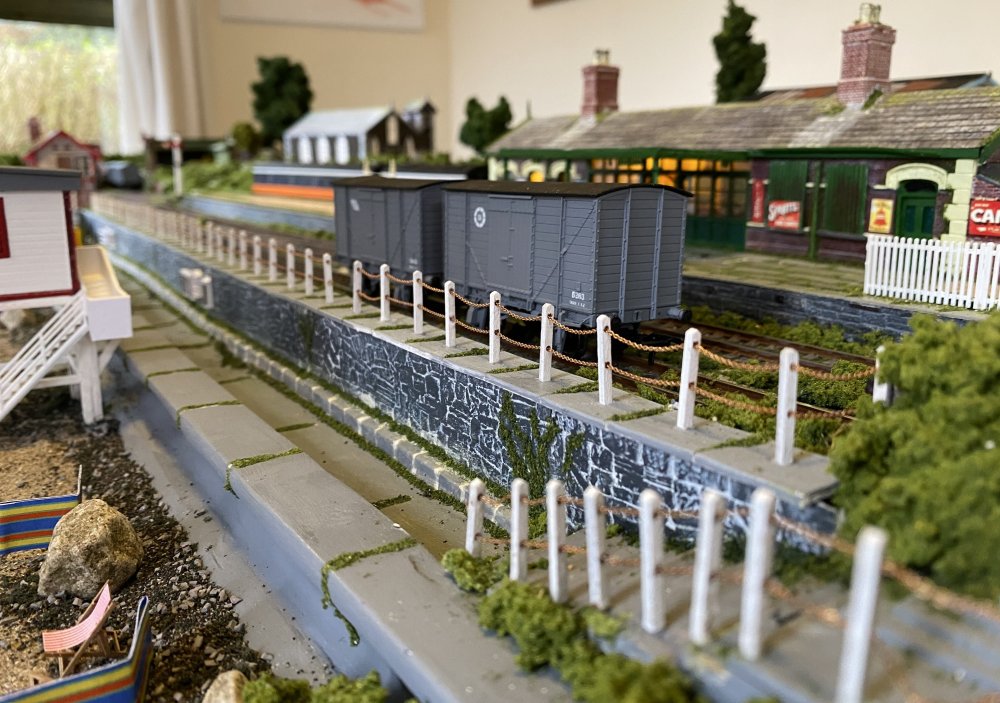
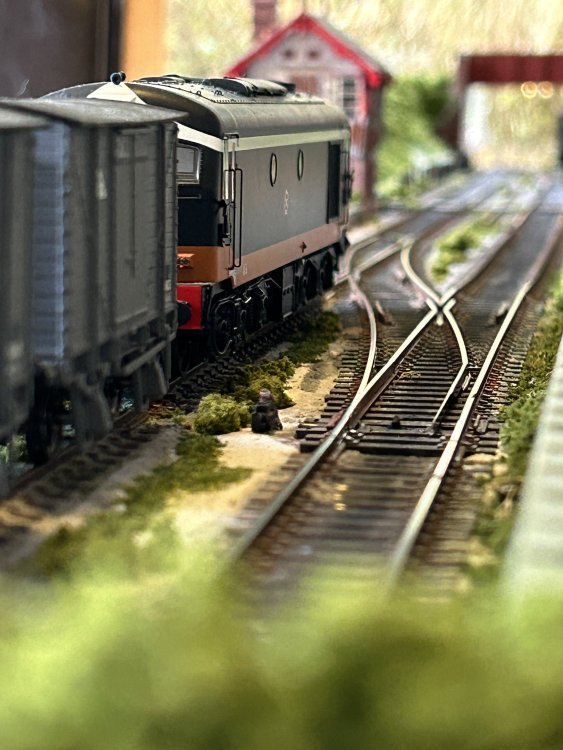
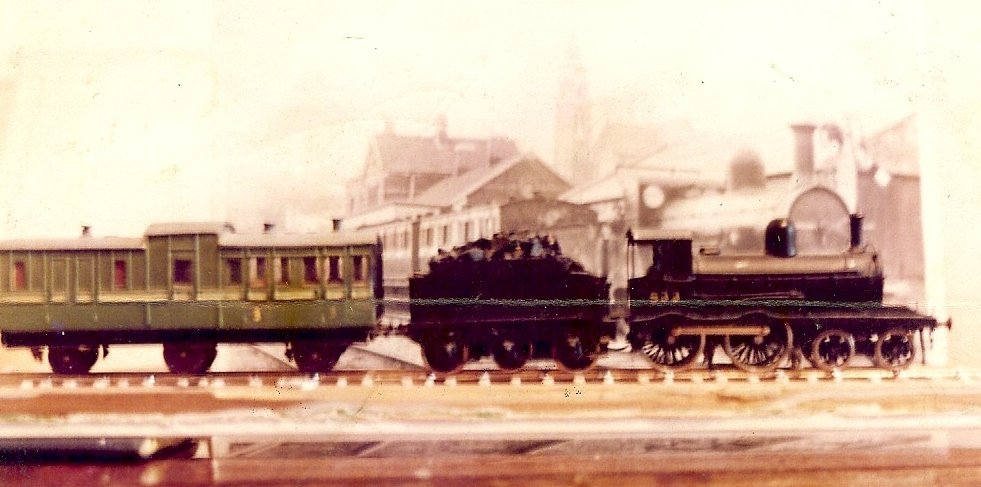

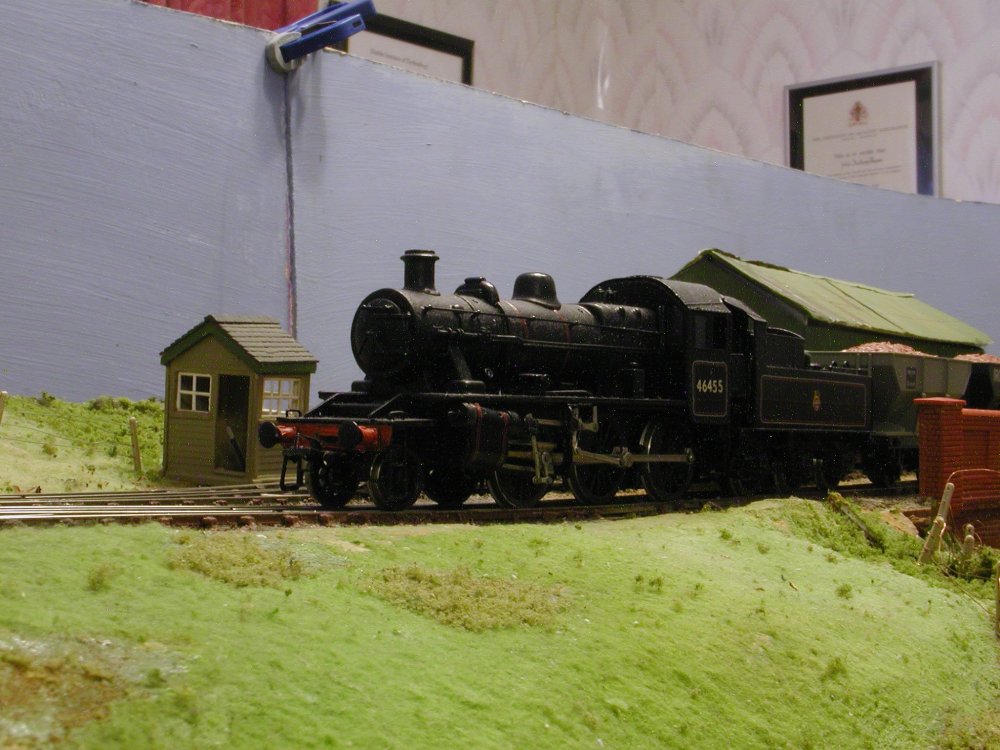
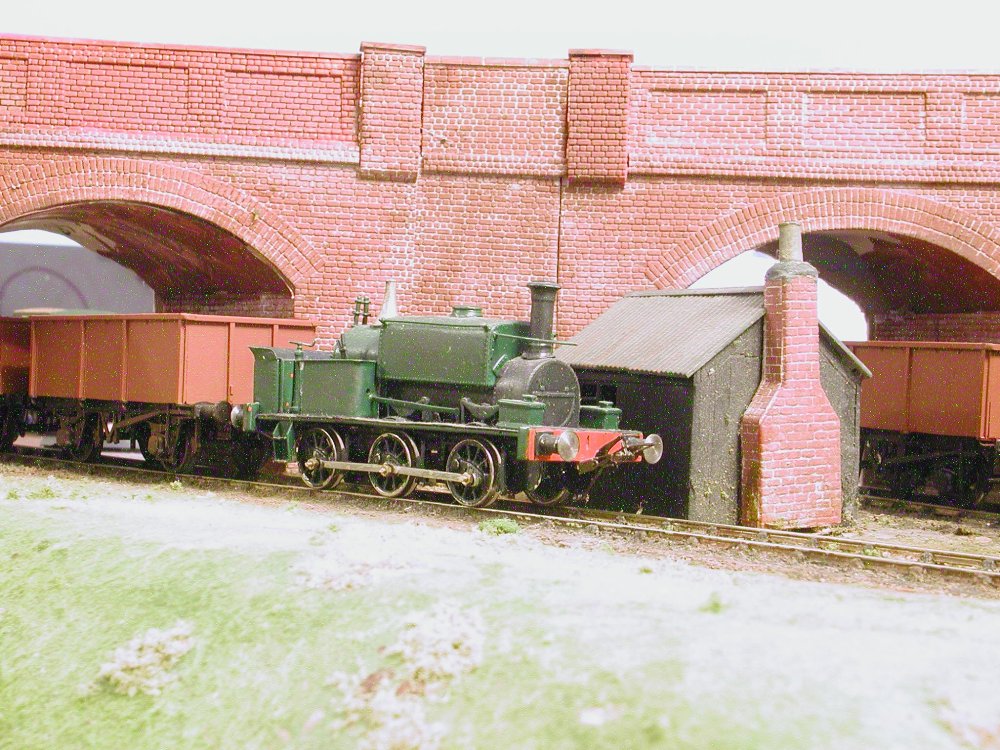
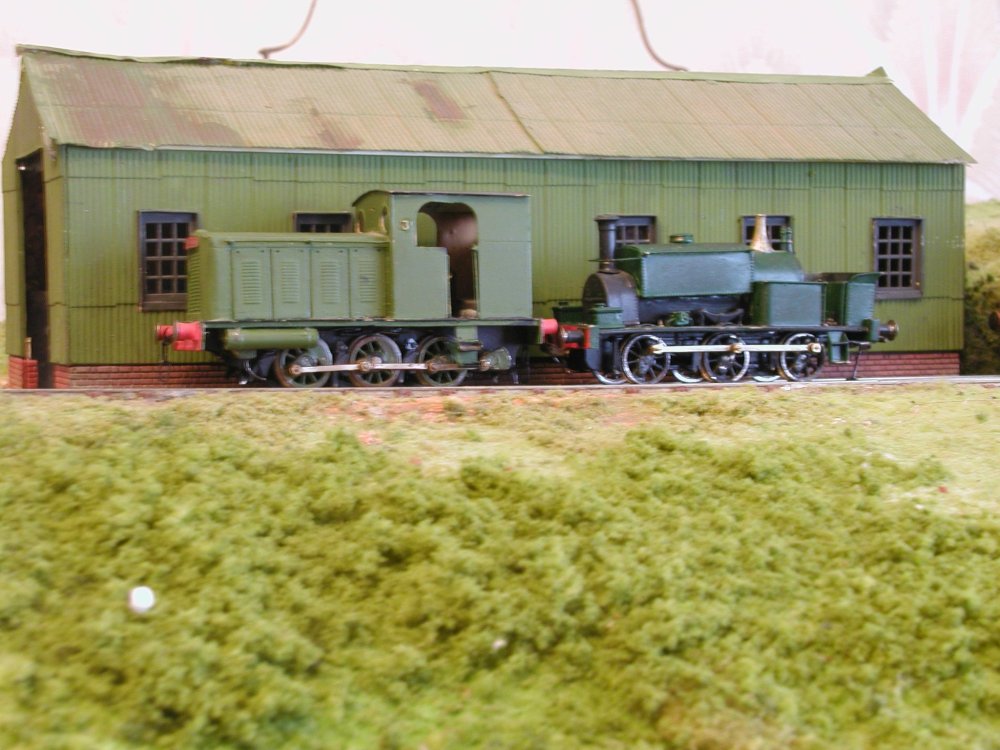

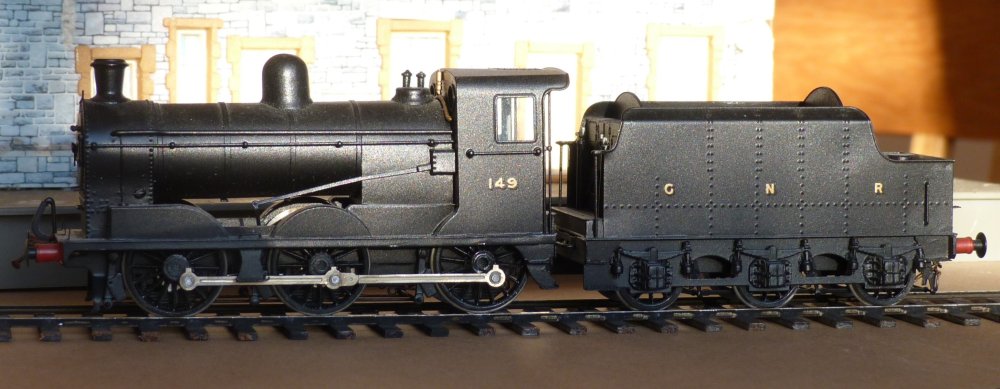
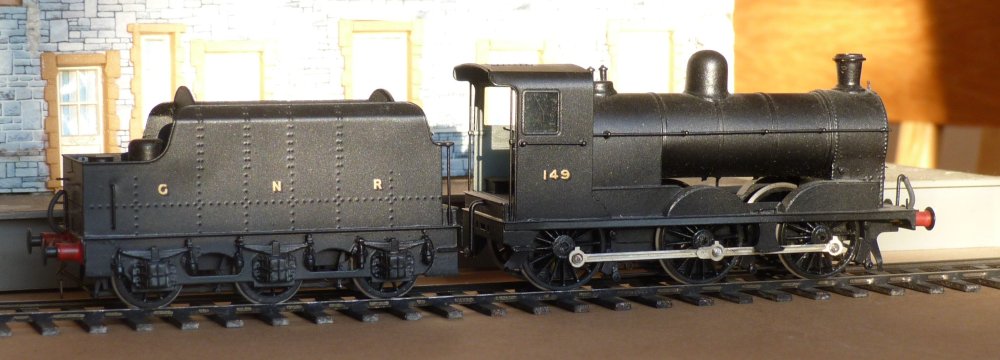
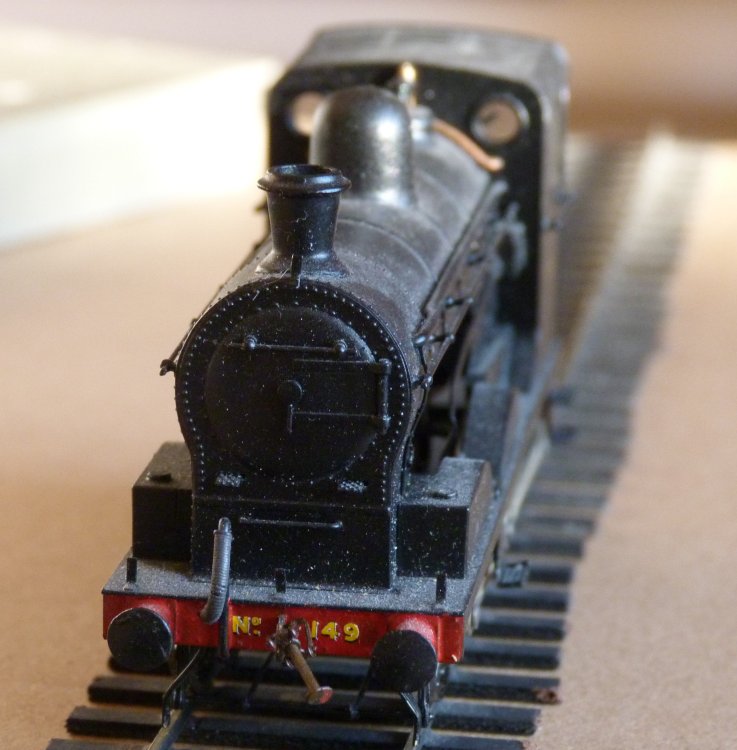
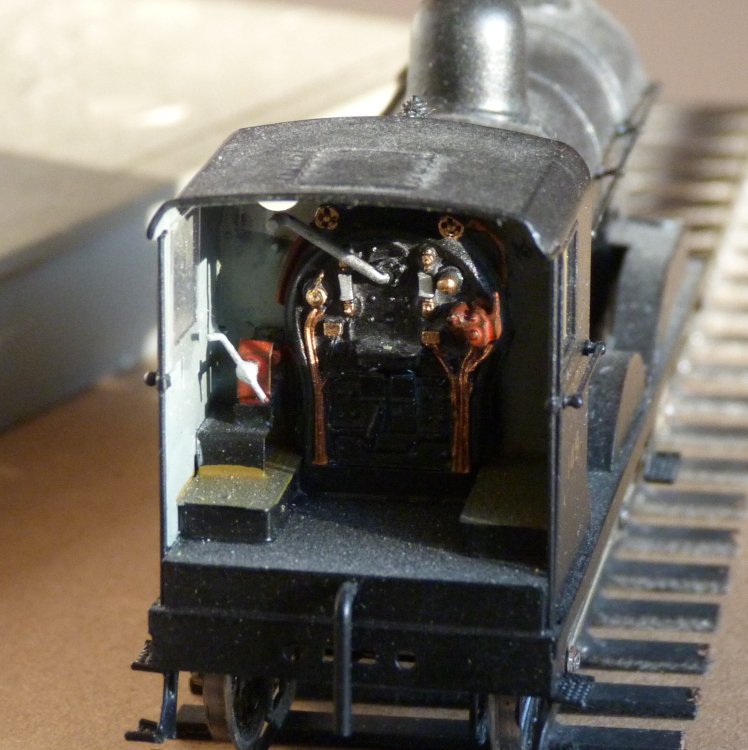
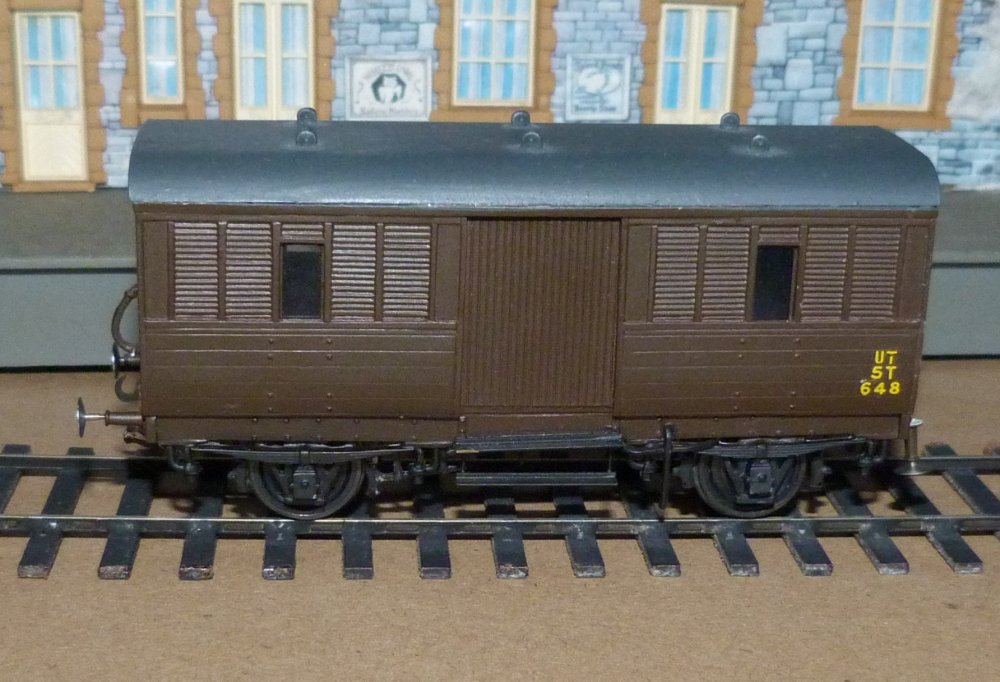
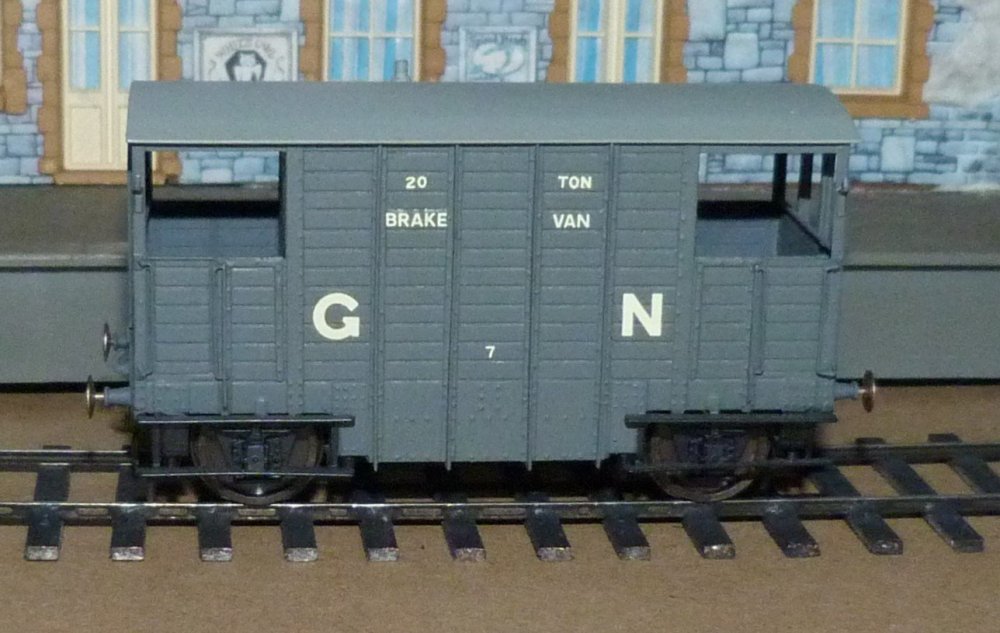
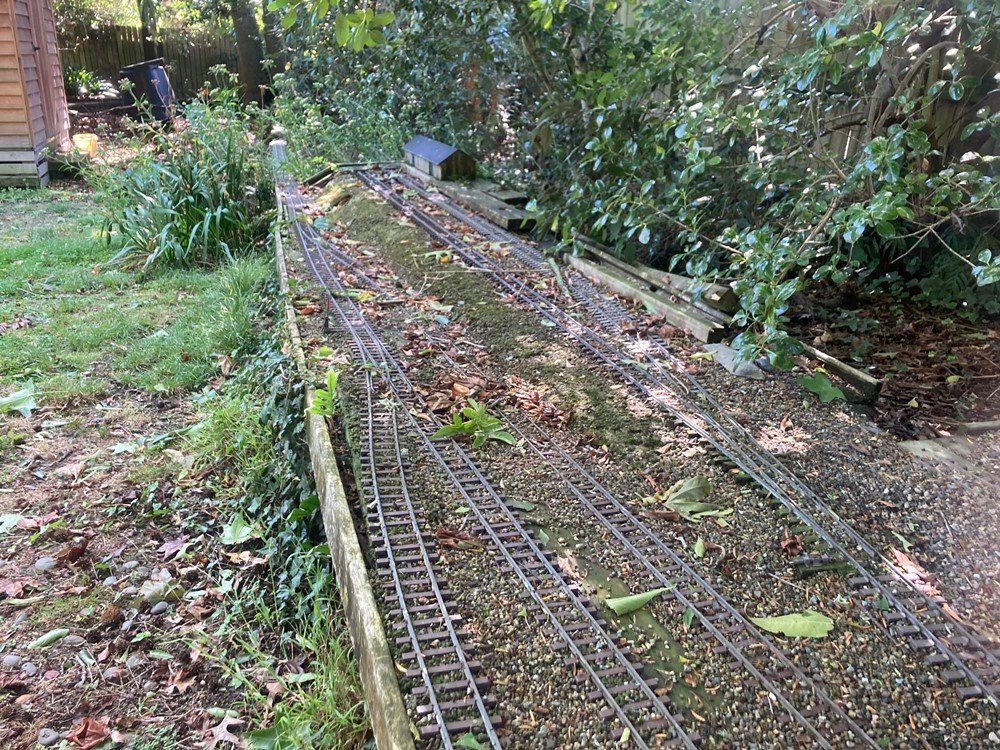
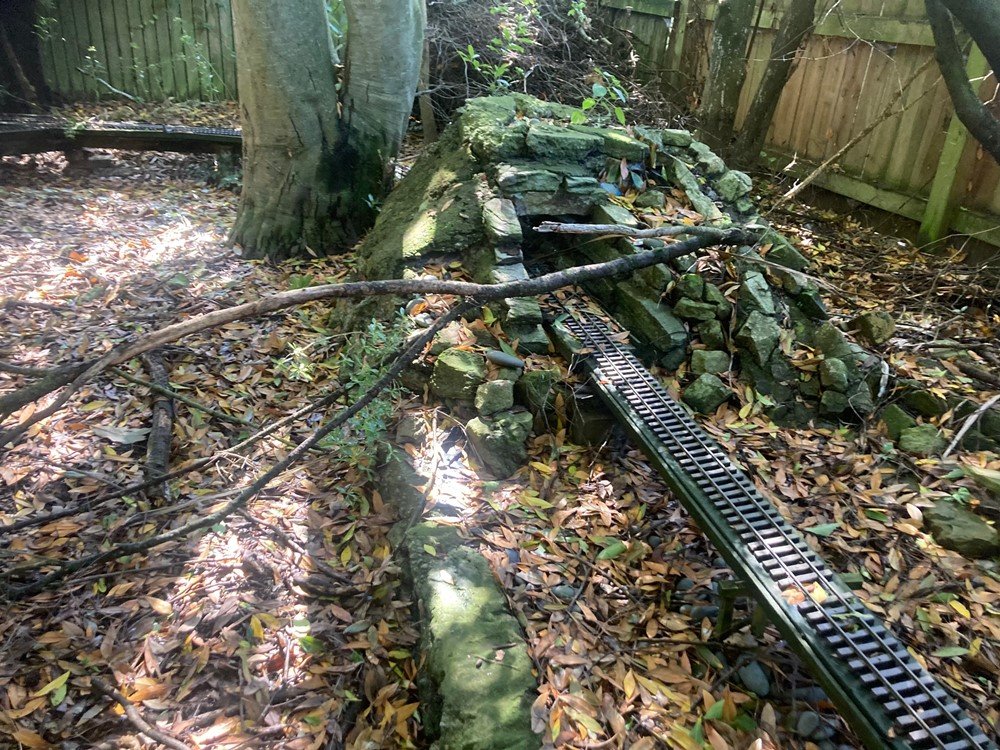
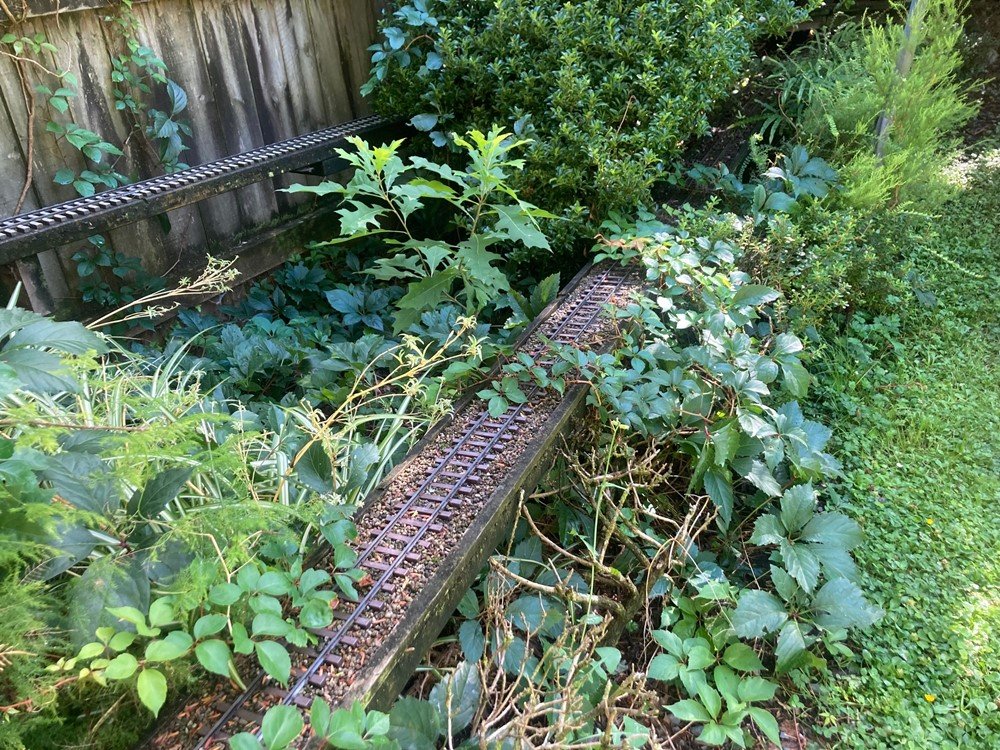
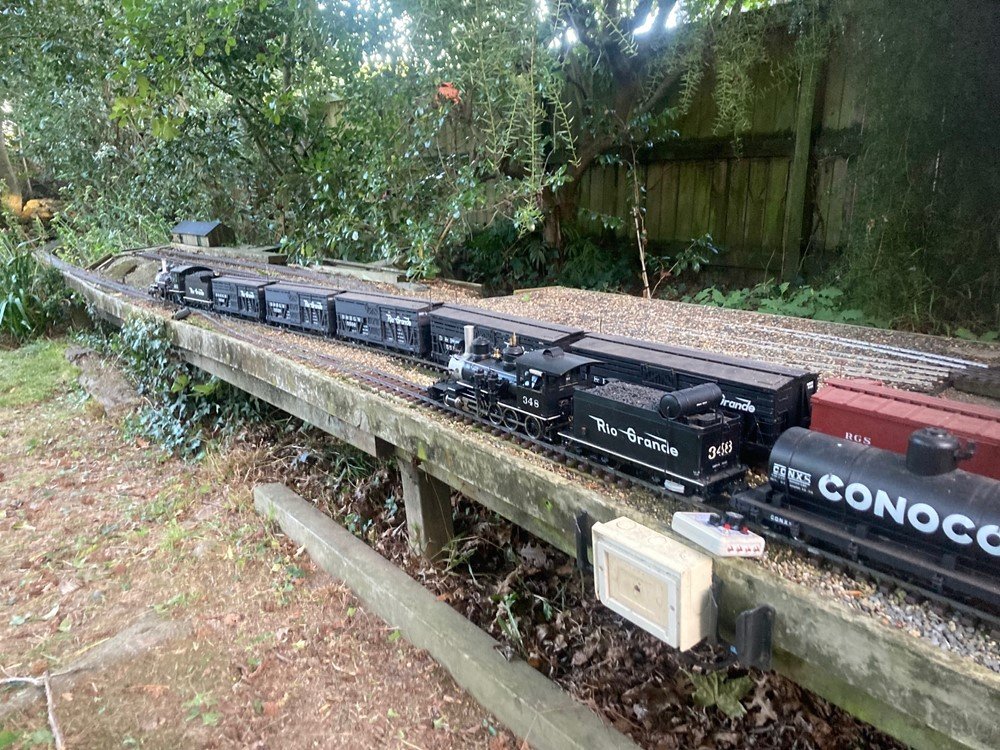
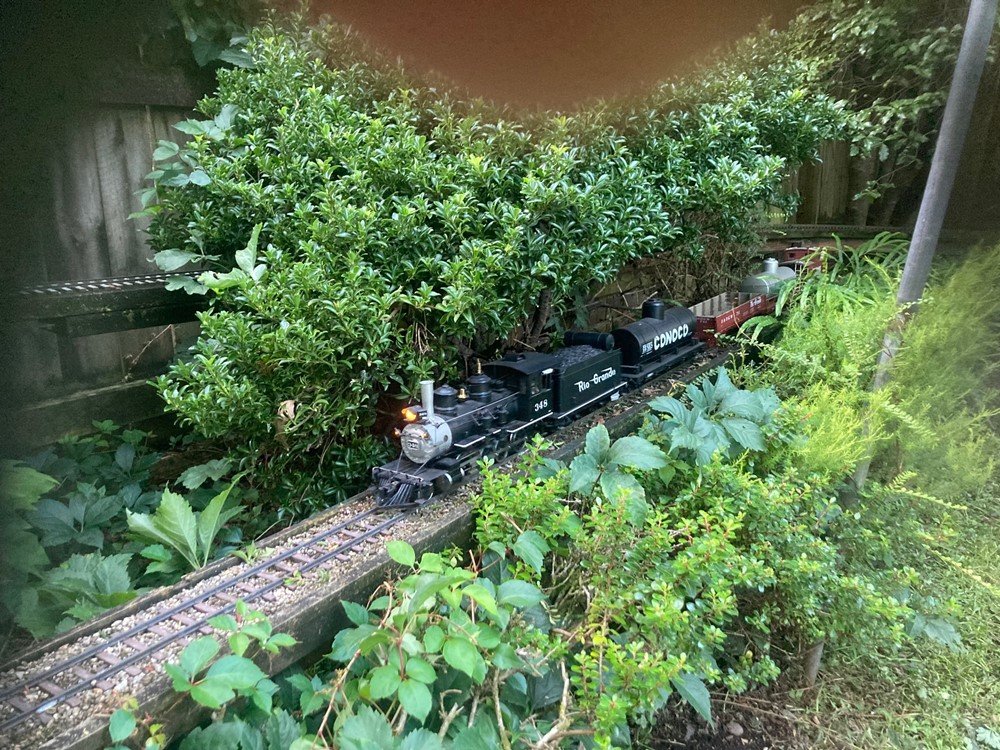
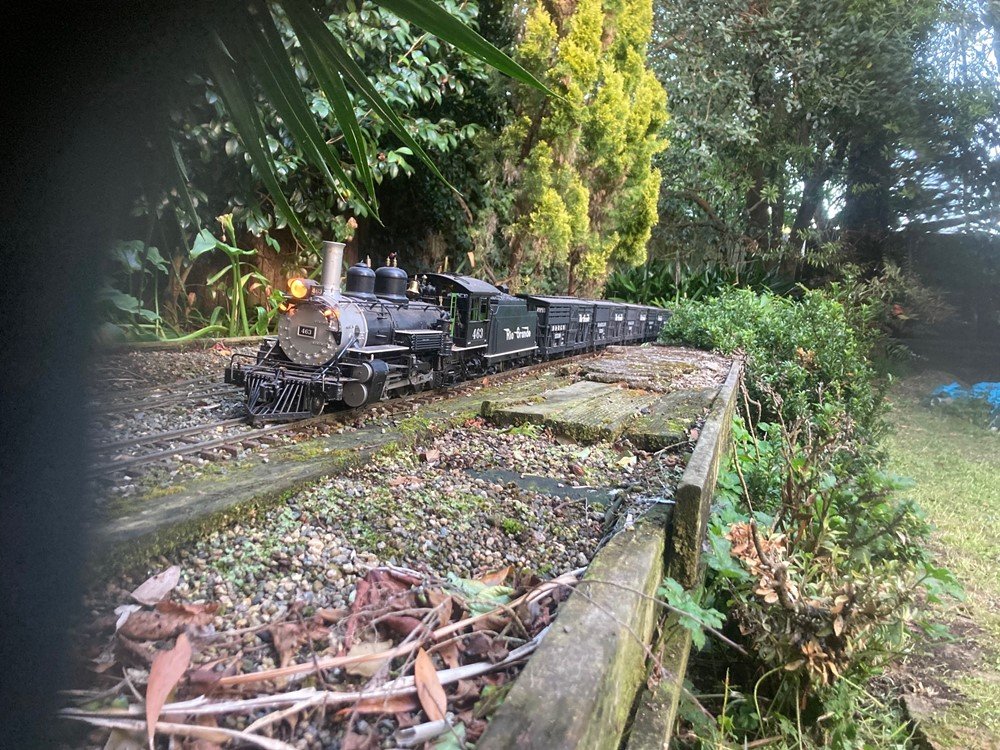
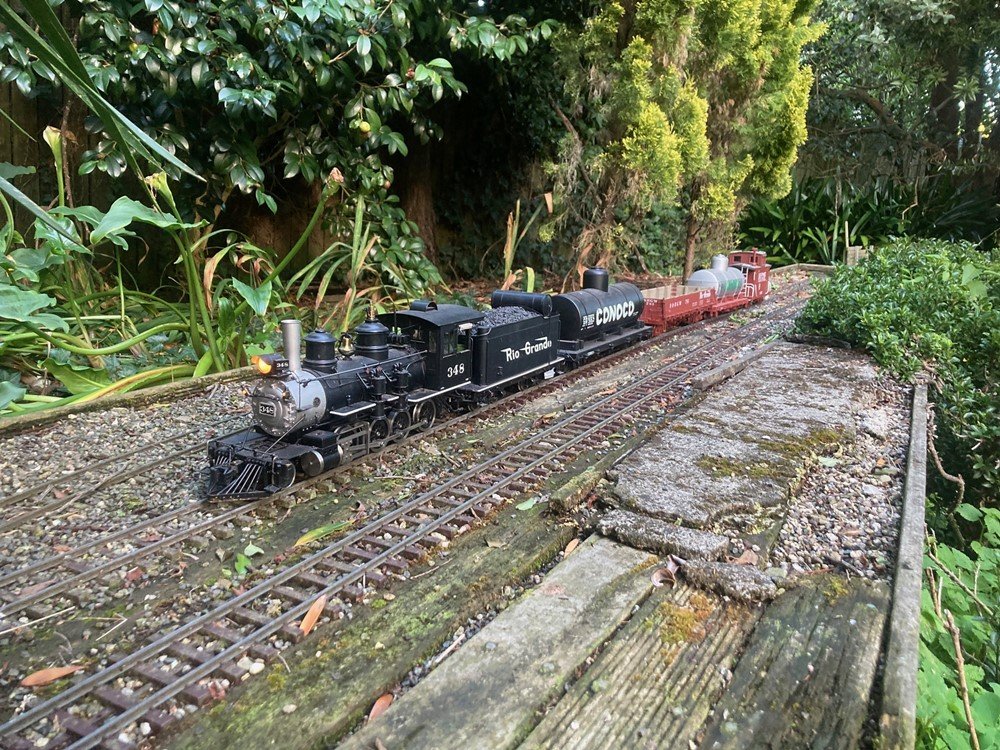 Interestingly 348 and its train made it up the grade without slipping but considerable wheel slip!
Interestingly 348 and its train made it up the grade without slipping but considerable wheel slip!
Malahide Model Railway Museum
in What's On?
Posted
Could be heading to Landsdown Road for an International before running ECS to Dunlaoire for stabling.
Before the DART the Enterprise and match specials were often stabled in up yard at Dunlaoire, up to the Mid-70s match specials were stabled in the RDS sidings
Traffic from Belfast to the Internationals seems to have been heavy once watched staff at Belfast Central in the early 2000s cheerfully directing a long line of equally cheerful passengers into the last carriage of the mid-morning Enterprise.
Don't know about CAFs but 80 Class sets operated Curragh Race specials off the NIR system, saw a 6 car 80 Class set waiting to work a return race special at Kildare in the late 90s. I visited Kildare in the expectation of seeing one of the new IE 2700 railcar sets, IE had recently timetabled a Sunday afternoon Ballina-Waterford passenger most likely intended to cater for returning Waterford Institute of Technology Students but at the appointed time saw an NIR 80 Class set instead!